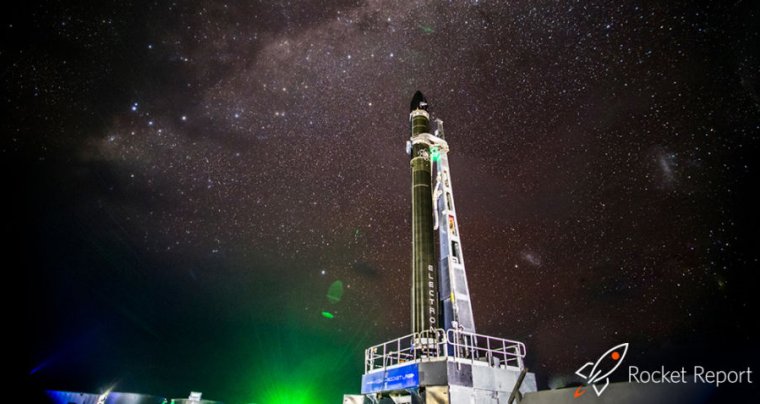

reader comments
313 with 68 posters participating
Welcome to Edition 2.13 of the Rocket Report! There continues to be no shortage of news about rideshare launches this week, and it appears as though SpaceX has really shaken up the smallsat industry with its new—and changing—plans to launch satellites for a very low cost. The company also had a big week with its Starhopper test vehicle.
As always, we welcome reader submissions, and if you don’t want to miss an issue, please subscribe using the box below (the form will not appear on AMP-enabled versions of the site). Each report will include information on small-, medium-, and heavy-lift rockets as well as a quick look ahead at the next three launches on the calendar.

Iran fails at another orbital launch attempt. Satellite imagery shows that an Iranian rocket appears to have exploded on the launchpad Thursday, NPR reports. Imagery from the commercial company Planet showed smoke billowing from the pad at the Imam Khomeini Space Center in northern Iran. The pad had been given a fresh coat of paint in recent days, and numerous vehicles had been spotted around the site in preparation for the launch attempt.
Not a good batting average … If you’re keeping score at home, this is Iran’s third orbital launch failure of 2019, giving the country a record of 0-for-3. The exact type of rocket that failed Thursday is unclear, but the circular pad had previously been used to launch a type of two-stage, liquid-fueled rocket known as the Safir. The rocket is relatively small and can carry only small satellites into orbit. Iran was thought to be preparing for another satellite launch. (submitted by Ken the Bin)
X-37B sets record for spaceflight duration. The Washington Post reports that the Air Force’s ultra-secretive, uncrewed spacecraft that looks like a miniaturized version of the space shuttle just broke its own flight record of 719 days in continuous orbit. The spacecraft launched into orbit in 2017 on a Falcon 9 rocket.
So what’s it doing up there in low-Earth orbit? … Previously, the Air Force has said, “The primary objectives of the X-37B are twofold: reusable spacecraft technologies for America’s future in space and operating experiments which can be returned to, and examined, on Earth.” Beyond that, we’re deep into the realm of speculation, but one thing the vehicle is definitely doing is proving its ability to fly in space for a long time before coming home.
German company building smallsat launcher. German satellite maker OHB SE is developing a space rocket for small payloads. The first flight of the planned rocket is set for late 2021, OHB Chief Executive Officer Marco Fuchs said in an interview with Bloomberg. The company has a team of about 35 employees in Augsburg, southern Germany, working on a so-called mini-launcher designed to bring small payloads into orbit with a low-cost approach, the CEO said.
Next logical step … “To build our own rocket is a logical step for OHB,” Fuchs said in an interview at the company’s headquarters in Bremen, Germany. “We will become our own client and launch our own satellites.” It may or may not be the next logical step. Developing a rocket is time-consuming, costly, and not as easy as it sounds. The company did not comment on potential launch sites.

SpaceX increases rideshare program flight rate. On Wednesday, the company said it has “received a lot of interest and great feedback from customers” for its proposed Falcon 9 rideshare program for small satellites. As a result, instead of flying just one mission a year, the company now plans three regularly scheduled annual missions to Sun-synchronous orbit, for ESPA class payloads, for as low as $1 million per mission.
An intriguing development … Additionally, the company said, it will offer launch opportunities to mid-inclination as often as a monthly basis on Starlink missions, as well as missions to Sun-synchronous and/or polar orbits. The company has updated its website offerings for the program here. This is a fairly interesting development, which is either indicative of the pent-up demand for small-satellite launch or the interest in the price point offered by SpaceX.
Rideshare versus dedicated smallsat launch is a thing. Earlier this month, the same day as SpaceX announced its rideshare launch plans, Arianespace offered a similar service. The company said it will fly a number of smallsats directly to geostationary orbit on an Ariane 64 in the first half of 2022. The GO-1 mission will be able to carry up to 4,500kg of satellites, placing them in GEO just six hours after launch. “There is a market out there,” said Wiener Kernisan, president of Arianespace’s US subsidiary, according to SpaceNews. Arianespace is in talks with three or four potential customers, and he expected the first deals signed in perhaps three to six months.
Price versus convenience … The advantage that Arianespace and SpaceX offer to smallsat developers is price: on a per-kilogram basis, a large rocket is usually less expensive than a small one. If small-launch vehicle providers are worried about losing business to lower-cost rideshare options, they’re not publicly showing concern. Dozens of companies are working on small launchers, and there’s widespread belief the launch market can accommodate only a handful of new companies dedicated to smallsats. This will be part of the major shakeout of launch providers over the next few years.

Starhopper aces first significant flight test. On Tuesday evening in South Texas, SpaceX launched its Starhopper test vehicle for the second time. During this test, it flew much higher than last month, nearly straight up to 150m. Then, under the power of a single Raptor engine, the vehicle smoothly moved laterally for about 100m before a controlled descent and touchdown in the center of a landing pad.
Next stop, suborbital flight? … From a technical standpoint, the test was impressive, demonstrating the thrust and vector control of the new Raptor engine. This was the first time a large rocket engine burning liquid-methane propellant made a significant flight, and it appeared to be mostly, if not entirely, successful. SpaceX engineers can take confidence from this test as they move on from Starhopper and into finishing their builds of Starship orbital prototypes in Texas and Florida later this year.
Battle over Europa Clipper rocket intensifies. On Tuesday, NASA Inspector General Paul Martin wrote an extraordinary letter to the US senators who determine the budget for the space agency. In effect, the independent NASA official asked Congress to kindly not meddle in decisions that concern actual rocket science. The letter addressed which rocket NASA should use to launch its multibillion-dollar mission to explore Jupiter’s moon Europa, Ars reports.
Stay in your lane … Congress, in appropriations legislation, has for several years mandated that the space agency launch the Clipper mission on the Space Launch System rocket. NASA could get schedule certainty and pay as much as $1 billion less by using commercial rockets, Martin wrote. What’s remarkable about this letter is that Martin is essentially having to tell Congress to stay in its lane—Congress sets the budget for NASA, certainly, but actual rocket scientists should be deciding the best way for the agency to get its valuable payload safely to Jupiter, on time, for optimal science. (submitted by Tfargo04)
No changes imminent to Air Force procurement. The Air Force launch-service procurement competition is intended to buy national security launches for 2022 through 2026, but it has faced legal and political challenges in recent months. But SpaceNews reports that the Pentagon currently has no plans to make any changes to the program, said Ellen Lord, undersecretary of defense for Acquisition and Sustainment.
A battle of four … “There are no changes imminent,” Lord said Monday at a Pentagon news conference. But she did not completely rule out future revisions to the National Security Space Launch Phase 2 Launch Service Procurement. “We will see how things go and adjust if necessary,” Lord said. Four companies submitted proposals for the Phase 2 procurement: United Launch Alliance, SpaceX, Northrop Grumman, and Blue Origin. (submitted by Ken the Bin)
Boeing completes SLS rocket engine section. Officials from NASA and the rocket’s prime contractor Boeing formally signed off on the first assembly of one of the most complicated elements of the SLS booster. After a review of data from two months of functional testing at the Michoud Assembly Facility, the engine section element of the first SLS Core Stage is complete and cleared to be mated to the rest of the vehicle, NASASpaceFlight.com reports.
Core stage completion finally coming … The engine section is the compartment at the bottom of the core stage where the main propulsion elements come together to meet up with the different propellant, hydraulic, pneumatic, and electric interfaces of four RS-25 engines. Boeing is hoping to complete construction of the core stage by the end of this year, allowing for a Green Run test of the vehicle in 2020. (submitted by platykurtic and Ken the Bin)
Next three launches
August 30: Rokot | GEO-IK 2 satellite | Plesetsk Cosmodrome, Russia | 14:00
Sept. 10: H-2B | Eighth HTV supply mission to ISS | Tanegashima Space Center, Japan | 21:33 UTC
Sept. 25: Soyuz | Soyuz MS-15 crew mission | Baikonur Cosmodrome, Kazakhstan | 13:57 UTC



